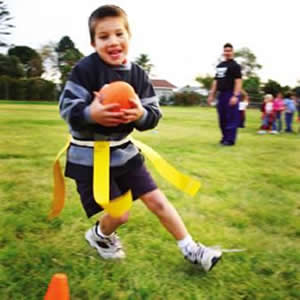Padded Caps Approved for MLB Pitchers
This has been a widely reported story in recent days. I applaud MLBs efforts to address a growing problem in professional baseball. If pitchers make the decision to wear the caps (it’s currently optional) it may protect them from hits directly to the front and side of the head. I do have concerns that it may provide a false sense of security given the fact that it does not protect the face, jaw or ear region of the head and face. Some of the most severe injuries of late resulted in hits to the head in the ear area; a region not currently protected by the new cap. Perhaps this is the first step to face shields at all levels of baseball.
Councilman Levin has proposed legislation that will require a physician and/or athletic trainer be available at all youth football games and full contact practices for teams that use Department of Education or Parks and Recreation fields in New York City. The leagues impacted by the legislation would be PSAL, Catholic High School League and Pop Warner. The proposal has been supported by the New York State Athletic Trainers’ Association (NYSATA). I hope this move is the beginning of mandating necessary coverage with all youth sport leagues around the country.
Recent research from the University of Washington shows that young girls often continue to player soccer through concussion symptoms. Additionally, many of them did not seek evaluation, even after the match concluded. It’s not just young football players who want to continue to play after suffering a concussion, you must be diligent with all youth sports.
Sports at a young age are supposed to be about fun and learning sport and life skills, but Friday Night Tykes is quite the opposite. The growing concerns regarding the culture and behaviors chronicled in the show continues. The concern has grown to such a level that the National Athletic Trainers’ Association has issued an official statement regarding the show and its disregard for player safety.
Supported by the Sports Legacy Institute, Hit Count® is a program that utilizes impact sensors to track the number of hits a player receives in any given game or practice. If a player receives a certain number of hits (20G force or greater of linear acceleration) they would be removed from play. There are some concerns whether the program is realistic given the cost to implement the program. Also, can it be implemented in non-helmet sports such as soccer?
Efforts continue to find an appropriate and fiscally reasonable test that could be included as part of a typical sports pre-participation physical to detect potentially fatal heart conditions. The intention would be to reduce the incidence of SCA in young athletes.
A recent anonymous survey of over 200 players shows that players are more concerned with sustaining a knee or leg injury since it is seen as potentially more immediately career end than suffering a concussion. This is despite the available information that continues to demonstrate the long-term effects of suffering repeated concussions.
Submitted by Heather L. Clemons, MS, MBA, ATC






